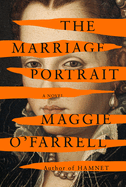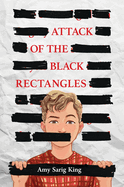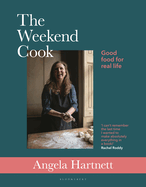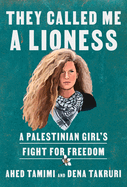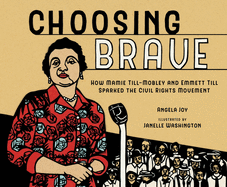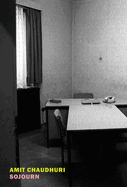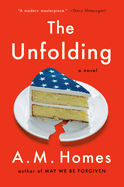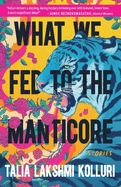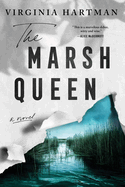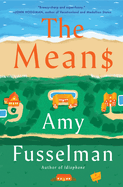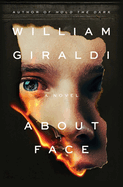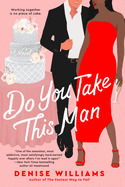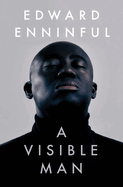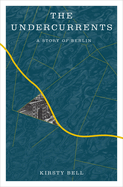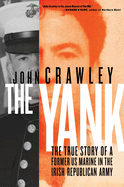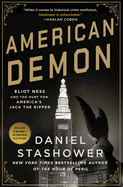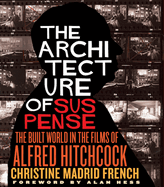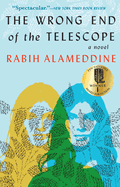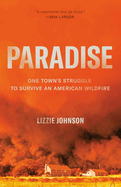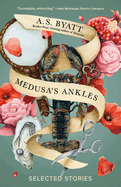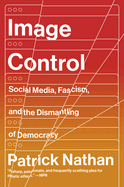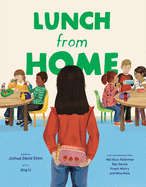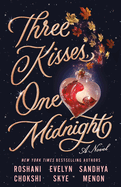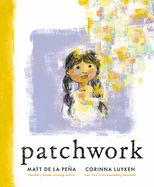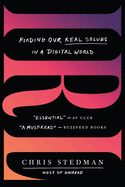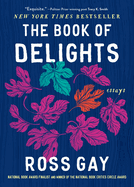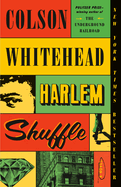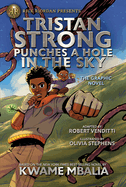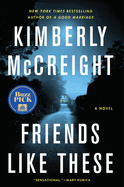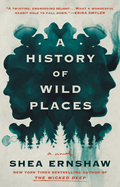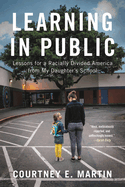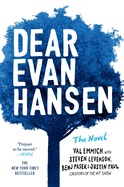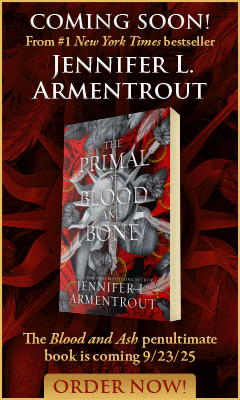Week of Friday, September 9, 2022
Among the 25 reviews this week: The Marriage Portrait by Maggie O'Farrell--the NBA-winning author of Hamnet--the "immersive and poignant story" of the woman who inspired Robert Browning's poem "My Last Duchess"; Amy Sarig King's Attack of the Black Rectangles, in which a sixth-grade teacher redacts "areas of the book made some students very uncomfortable"; and The Weekend Cook by Angela Hartnett, who "advocates for informal, uncomplicated cooking"; plus so many more.
Sidik Fofana talks in The Writer's Life about his debut, Stories from the Tenants Downstairs, centered on eight residents of a fictional Harlem apartment building, and also gives readers a peek into his real life as a public school teacher in Brooklyn.
The Marriage Portrait
by Maggie O'Farrell
The Marriage Portrait by Maggie O'Farrell--the National Book Award-winning author of Hamnet--unspools the immersive and poignant story of the woman who was the inspiration for Robert Browning's famous poem "My Last Duchess," Lucrezia di Cosimo de' Medici. Lucrezia is only 15 years old in 1560 when she is forced to leave her home in Florence to marry Alfonso II d'Este, the Duke of Ferrara. Originally engaged to marry Lucrezia's recently deceased sister, Alfonso is desperate for an heir to consolidate his power. But while Alfonso appears considerate and patient at first, Lucrezia soon begins to see that a much different, much more dangerous, man lurks beneath his calm exterior.
Like Hamnet, The Marriage Portrait captures a time and place in such textured and atmospheric detail that it is easy to get lost in its world. This novel, however, manages to juggle this cinematic portrayal of a period alongside a startlingly intimate portrait of a woman whose rebellious spirit must be confined to the wild images she hides in her landscape paintings. And while Alfonso's Janus-faced personality takes on a brutality that is the stuff of nightmares, Lucrezia's realization that "if she is to survive this marriage, or perhaps even to thrive within it, she must preserve this part of herself and keep it away from him, separate, sacred. She will surround it with a thorn-thicket or a high fence, like a castle in a folktale" speaks to the uncanny power dynamics of marriage more broadly.
Despite being, at its heart, a keenly insightful character study, O'Farrell's novel also succeeds as literary suspense. O'Farrell's careful plotting and intricate world-building ensures a perspective that, like her heroine, refuses to be confined by traditional narratives or societal expectations. --Alice Martin, freelance writer and editor
Discover: An expertly crafted, engrossing character-focused historical fiction, The Marriage Portrait will satisfy fans of Hamnet and those new to Maggie O'Farrell.
Sojourn
by Amit Chaudhuri
Amit Chaudhuri--novelist, poet, essayist, musician--dexterously expands the quotidian into philosophical, sociopolitical and existential ruminations in Sojourn, a sparse narrative with undeniably dense resonance. An unnamed Indian writer arrives in Berlin for a four-month university residency. He's befriended, then abandoned, by a Deutsche Welle journalist whose emigration as a Bengali refugee was sponsored in 1977 by Günter Grass. The writer teaches a class, drinks and dines with a few colleagues, and has a romantic relationship. Despite this being his second visit to Berlin, he remains a stranger in a strange land, navigating disconcerting landscapes that are both real and imagined.
Chaudhuri again proves his expertise with sly, indirect reveals, such as the novel's setting. Readers will know the year--"it was fifteen years since the wall had fallen"--and that the residency is at the Freie Universität, founded in 1948: "The university had come up in the fifties." The protagonist's promised spacious housing drolly confirms the prestige of his Böll Professor residency: he now sits on the same toilet used by Nobel Prize winner Kenzaburō Ōe, a former guest. "I felt a kind of empathy and embarrassment... this is what it comes back to: our relief at amenities."
Once more, Chaudhuri transforms unfamiliar geography into an intriguing character. He highlighted Bombay in Friend of My Youth and London in Odysseus Abroad; here, he memorializes a reunited Berlin of diverse neighborhoods and ethnic enclaves, of lingering divisions of what was once East and West, of streets with certain reputations and unsafe areas where neo-Nazis roam. As an extraordinarily keen observer of the ordinary, Chaudhuri offers absorbing fiction adroitly parsed from penetrating truths. --Terry Hong, Smithsonian BookDragon
Discover: Amit Chaudhuri's slender novel introduces an unnamed visiting Indian writer rediscovering Berlin in an intriguingly multilayered stranger-in-a-strange land rumination.
The Unfolding
by A.M. Homes
The Unfolding is award-winning novelist A.M. Homes's first novel since May We Be Forgiven (2012), and it is a riotously and unsettlingly funny look at one family's unraveling in the wake of the 2008 election. The Big Guy has made his life the Republican Party for years, which is why McCain's loss in the 2008 presidential election comes as such a blow. Following this turning point, his nearly catatonic wife, Charlotte, has finally admitted she's an alcoholic, but her stint in rehab is unearthing secrets he'd rather not face. And his usually obedient 18-year-old daughter, Meghan, is starting to question everything from his treatment of her mother to his history lessons. Yes, change is afoot. Now the only question is: What will the Big Guy do about it?
The Unfolding, like Homes's previous works, is packed with her particular brand of irreverent dark humor, which can simultaneously provoke and probe, frustrate and illuminate. Despite its topical and prescient elements, which certainly pack their own ideological punches, the novel is at its best when it's examining the intricacies of its characters. Meghan, in particular, stands out as a startlingly original and yet deeply resonant millennial daughter who experiences the end of her parents' world as the beginning of her own. With its pitch-perfect dialogue and antic pace, The Unfolding is both a return to form for Homes (Days of Awe) and an unsettling vision of the tender belly beneath some of the most terrifying dilemmas of the times. --Alice Martin, freelance writer and editor
Discover: Perfect for fans of Gary Shteyngart and Don DeLillo, The Unfolding is an off-kilter dark comedy that, like all of A.M. Homes's work, never flinches away from its taboo and explosive subject matter.
What We Fed to the Manticore
by Talia Lakshmi Kolluri
Animals tell their most harrowing, intimate and transformative experiences in What We Fed to the Manticore, a vivid, imaginative story collection from debut author Talia Lakshmi Kolluri that challenges readers to accept complexity and nuance in the inner lives of other animals.
"They say that life in the Sundarbans revolves around two things: the tide and the tigers. We are not the tide. We are the tigers." So begins the tale of the tiger narrator in the collection's title story, in which a manticore moves into the territory of a few starving tigers and begins to eat humans, a line the tigers agreed not to cross. In "The Good Donkey," the titular animal lets his beloved owner paint stripes on his hide so he can play the zebra in an attempt to reopen a zoo in war-torn Gaza City. Kolluri takes readers inside the intricate musical world of whales in "The Open Ocean Is an Endless Desert," and lets a polar bear tell its species' creation story in "The Dog Star Is the Brightest Star in the Sky." A total of nine furred, feathered or finned first-person protagonists bare their hearts, fears and quests for survival in locations around the globe, many struggling to make sense of a world forever changed by that most mystifying species, the human.
Kolluri's prose reads like a beautiful song as it soars over the savannah and under the sea. This collection serves as an impassioned reminder that humanity shares the planet with a wondrous array of other species whose inner landscapes and struggles may be more knowable than they appear. --Jaclyn Fulwood, blogger at Infinite Reads
Discover: Talia Lakshmi Kolluri's spellbinding prose illuminates the triumphs and tragedies of nine animal protagonists from their own viewpoints.
The Marsh Queen
by Virginia Hartman
Loni was 12 years old when her beloved father headed into the northern Florida marsh in his johnboat and did not return. At 36, she is working her dream job as a natural history artist at the Smithsonian, ignoring her past and her remaining family as hard as she can, until her younger brother calls to insist she come home to help care for their mother. The Marsh Queen, Virginia Hartman's fast-paced, compelling first novel, sees the prodigal daughter return to the swamps, the family she left behind, the mystery of her father's death and the possibility of a fresh start.
"Daddy wasn't just a visitor to the swamp, he was a part of the place." Loni's father, Boyd, was a Fish & Game officer, a fisherman, a devoted husband and father and a most unlikely suicide. Loni was his usual companion in the swamps, uninterested in fishing but a passionate and talented illustrator of the birds they watched together. As an adult, she's kept that passion, but grown distant from her brother and especially from her always-prickly mother, Ruth, now suffering from dementia.
Loni canoes the swamps, discovers family secrets, investigates her father's death, finds herself involved in fresh intrigues and dangers--and meets a handsome stranger. The Smithsonian, and leaving Florida behind, have always been central to Loni's life plan, but as she sinks back into the quirks of family and home, she may just find a new way. The Marsh Queen is unwavering in its lush, finely detailed, appreciative portrayal of a distinctive natural setting, and ends on a redemptive, even inspirational note. --Julia Kastner, librarian and blogger at pagesofjulia
Discover: Mystery, romance, conspiracy, family drama, natural history and art combine in this excursion into a decades-old suspicious death in the swamplands of northern Florida.
The Means
by Amy Fusselman
Before The Means really gets going, Shelly Means seems destined to be added to the list of characters readers love to hate. Shelly, an at-home mom who lives in Manhattan with her husband and two children, has one all-consuming ambition: to own a beach house in the Hamptons with a Japanese toilet that plays music "to cover up your activities," among other selling points. But as Amy Fusselman's debut novel gathers steam, narrator Shelly emerges as a quasi-sympathetic character with enough depth to entertain a moral dilemma or two--and she's damn funny while she's at it.
As the novel opens, Shelly and George Means have just purchased land in East Hampton. Aware that her clients are on a budget, their architect has designed a house for them that's to be constructed from shipping containers. But whether the building's plans will make it past the Home Aesthetics Committee seems a moot point after George, a voice-over artist, loses a job narrating a chicken sandwich commercial. Now how will Shelly afford her dream house?
Throughout The Means, Shelly is forced to examine issues stirred up by her acquisitiveness, among them environmental fallout and wealth inequality. Fusselman (Savage Park; Idiophone) presents a hilariously heightened reality full of consumer bait (a book called The Ethical Guide to Becoming a Gazillionaire and a real estate broker who doubles as a therapist), meant to reassure well-to-do people that they aren't shallow--yes, even when they're obsessed with owning a singing toilet. --Nell Beram, author and freelance writer
Discover: This hilariously heightened debut novel centers on one woman's all-consuming ambition: to own a beach house in the Hamptons with a music-making Japanese toilet.
About Face
by William Giraldi
Fame is both empty and destructive in About Face, the razor-sharp literary thriller by William Giraldi (American Audacity; Hold the Dark). After Seger Jovi writes a scathing piece about Val Face for a biweekly magazine in Boston, he doesn't expect a phone call from Face's assistant, asking to meet with him. And he certainly does not anticipate that the meeting will result in an offer to join Face's New England tour as its official writer. Jovi sees the charismatic guru as "little more than a calculated mash-up of the raconteur, the coquet, and the motivational speaker... a hunkier Tony Robbins." He has doubts about taking the job, especially because Face and his team will have final approval over anything he writes, but he needs the opportunity. And he believes there must be a reason that Face chose him over an adoring fan.
The labyrinthine bureaucracy of assistants and the absurdity of life as part of a celebrity entourage would have been plenty of material alone for a comic novel. The dialogue is frequently laugh-out-loud funny, such as in a discussion between Jovi and Face--argued with the seriousness of the First Council of Nicaea--about the best Bruce Springsteen album. But as Jovi begins to develop a strange sympathy for Face, it also becomes clear that the star has a potentially violent stalker.
This gripping tale will keep readers on the edge of their seats while leaving them pondering what makes celebrity--and what it costs. --Kristen Allen-Vogel, information services librarian at Dayton Metro Library
Discover: This literary thriller dissects celebrity culture with a sharp wit and a palpable sense of danger.
Romance
Do You Take This Man
by Denise Williams
An attorney with an "anti-romance stance" who moonlights as a wedding officiant meets a sports events manager who lands himself in the wedding planning business. They make for an oddly endearing couple in Do You Take This Man, a contemporary opposites-attract romance from Denise Williams (The Fastest Way to Fall; How to Fail at Flirting).
RJ is a high-powered divorce attorney with no confidence in the lasting power of love, despite the words she recites as an in-demand wedding officiant whose first ceremony goes viral. Lear is a bruised, newly single event planner working for his cousin's wedding planning business while he figures out his next steps in life. The two are far from compatible, yet their disdain for each other seems to spark something between them as their work lives are thrown together over the course of several months. When that spark ignites, the two agree to an "enemies with benefits" arrangement in the bedroom: "We made each other feel good, and then we went back to veiled contempt [at work]."
Romance readers will know where Williams is taking this set-up from the first pages of Do You Take This Man but, as with all of the best romance reads, knowing where it will end does nothing to subtract from the clever twists and turns it takes to get there. As their relationship evolves, RJ and Lear must learn to take down the many walls they've put up against love in the name of self-protection and decide if there's something, after all, to what they sell to their wedding clients--the idea of lasting romance. --Kerry McHugh, freelance reviewer
Discover: Opposites attract in a love story between an anti-romance divorce attorney and a cynical wedding planner, thrown together in an unexpected work situation.
Food & Wine
The Weekend Cook: Good Food for Real Life
by Angela Hartnett
The Weekend Cook by Angela Hartnett--a professional chef with an Italian background who advocates for informal, uncomplicated cooking--will inspire home cooks to fire up feasts for their family and friends. Hartnett (Angela's Kitchen) has been an internationally beloved chef for more than 30 years, worked with Gordon Ramsay and launched and managed critically acclaimed restaurants. She believes that no matter one's profession, weekends rebalance life-work priorities.
Hartnett--and her chef husband, Neil Borthwick--live in London's East End, where they love to entertain and celebrate their community. The Weekend Cook is testament, as she brings together 100 of her "go-to" recipes in which simplicity doesn't sacrifice flavor. Her Crab Salad gets jazzed up with lime. Rich, delicious Artichoke Soup is elevated by roasted chestnuts and a soft-poached egg. Harissa Marinade is the secret ingredient to Griddled Monkfish Tails. And she ramps up Curried Cauliflower with pine nuts and raisins. Hartnett sheds light into building layers of complexity into soups, quiches, vegetables, risottos, meat and fish dishes. Separate sections are dedicated to recipes inspired by Britain and by her own neighbors, friends and peers. Sweet treats occupy the last quarter of the cookbook, which includes recipes for shortbread, ice cream, puddings, tarts and Floating Islands, a showstopper dessert that features meringues, caramel and custard.
Hartnett's concise, down-to-earth recipes, along with intimate and deliciously inviting full-color photos, are proof of her philosophy that good cooking is all about sharing love and bringing joy--to oneself and to others. --Kathleen Gerard, blogger at Reading Between the Lines
Discover: An accomplished, international chef shares 100 of her favorite go-to recipes, perfect for entertaining during weekends at home.
Biography & Memoir
They Called Me a Lioness: A Palestinian Girl's Fight for Freedom
by Ahed Tamimi and Dena Takruri
Palestinian teenager Ahed Tamimi made international news in 2017 after a video of her slapping an Israeli soldier went viral. In her unflinching memoir, They Called Me a Lioness--written with Palestinian American journalist Dena Takruri--Tamimi (now 21) recounts her childhood in the West Bank village of Nabi Saleh; her family's life under Israeli occupation; her arrest and imprisonment (in addition to other traumas); her repeated interrogations and court hearings; and her continuing fight to liberate Palestine. The memoir provides an intimate look into daily life for Palestinian civilians and serves as an insistent call for people worldwide to take up the Palestinian cry for freedom.
Tamimi gives a brief and helpful historical overview of the Israel-Palestine conflict, but her narrative is justly focused on her own experiences: a life of checkpoints and restrictions but also deep affection and love from her family and friends. She charts her journey from anxious child to fearless resistance fighter, recounting the arrests, shootings and deaths of several relatives and friends. "As Palestinians, simply by residing in our homes, we practice a form of resistance," she writes, contrasting her village's peaceful protests with the aggression and violence of Israeli soldiers.
Tamimi completed her secondary school studies while in prison and formed deep bonds with her fellow female prisoners. Since her release, she is even more determined to fight for a free Palestine. Her story, though heavy and heartbreaking, provides an important perspective, a counternarrative to many Israeli viewpoints and an inspiring account of everyday, persistent activism. --Katie Noah Gibson, blogger at Cakes, Tea and Dreams
Discover: Palestinian activist Ahed Tamimi vividly recounts her life under Israeli occupation and argues for her homeland's freedom.
A Visible Man: A Memoir
by Edward Enninful
For some people, fashion offers a reprieve from everyday life; for British Vogue editor-in-chief Edward Enninful, fashion reflects life--or at least it should. In A Visible Man, his openhearted, awe-arousing memoir, Enninful writes, "Fashion is a mirror--sometimes a funhouse mirror, granted--of the world at large. The people who have found themselves on its outskirts here have usually found themselves on the outskirts elsewhere. It has been a personal mission of mine to change that." He has.
Enninful was born in Ghana in 1972 to a dressmaker mother and a father who was a major in the Ghanaian military. A shy and bookish kid, Enninful would assist his mom at her workshop, where he learned how to draw dresses. In 1985, the family fled the "Ghanaian goon squads" and settled in London, where Enninful's interest in fashion remained constant. A chance meeting when he was 16 led to his first modeling gig, after which he began writing for the feisty fashion indie i-D. At age 18, he became i-D's fashion director--the youngest ever for an international fashion magazine. Enninful proceeded up the fashion-magazine ladder, but at every step, his personal life threatened his climb: he navigated both health problems and alcoholism. Equally bruisingly, he faced his father's homophobia.
Through it all, Enninful's resolve to use his platform to challenge the tall/thin/white fashion ideal was unflagging. His stylish mononymous friends (Rihanna, Naomi, Idris) make cameos in his book, which is written with the panache one would expect of a fashion authority. A Visible Man offers a keyhole glimpse at the anarchic international fashion scene of the 1980s and '90s. --Nell Beram, author and freelance writer
Discover: This openhearted, awe-arousing memoir by the Ghana-born editor-in-chief of British Vogue chronicles his professional rise and personal mission to diversify the look of fashion.
Rated X: How Porn Liberated Me from Hollywood
by Maitland Ward
An alternative subtitle to Rated X, Maitland Ward's memoir, could be How an Ex-Disney Sitcom Star Found Happiness and Self-Respect in the Porn Industry. Ward was cast when just a junior in high school in the daytime TV soap opera The Bold and the Beautiful. She engaged in an emotionally unhealthy relationship with one of her costars that slowly gnawed away at her self-esteem. After two years on the soap, her character was raped, kidnapped and nearly burned alive before being written out of the series. She became a series regular two years later on the ABC/Disney sitcom Boy Meets World and struggled to find roles when the series ended. During this time period, she investigated her sexuality with men, women, threesomes, toys and BDSM. Her account of it all does not shirk the details; some of this memoir reads like a letter to Penthouse magazine.
Acting roles dried up. "To be expendable is to be a woman in Hollywood," Ward writes. She attended Comic-Con-like events, which led to cosplay and the awakening of her exhibitionist desires. She also took erotic cosplay photos that she sold online, which led to the making of X-rated films--all with the support and encouragement of her husband. Her role in 2019's Drive--a plot-driven, X-rated film requiring acting--won her acclaim and awards recognition, created a mainstream media firestorm and set her up financially for life.
An aggressively sexual memoir not for the faint of heart, Rated X is a gripping, empowering and contrarian narrative of finding self-worth and escaping victimhood by embracing the porn industry. --Kevin Howell, independent reviewer and marketing consultant
Discover: An eye-opening, sexually frank and contrarian memoir by a mainstream actress who finds success and respect by moving into the porn industry.
The Undercurrents: A Story of Berlin
by Kirsty Bell
In The Undercurrents: A Story of Berlin, British American writer and art critic Kirsty Bell delivers an elegantly constructed hybrid of memoir and close-up portrait of her adopted city as inspired by a very personal vantage point: the view from her kitchen window overlooking a picturesque, tree-lined canal.
Bell (The Artist's House) immigrated to Germany's capital in 2001 and married a Berliner. With their two children, the couple moved into a stately 19th-century building situated on the banks of the Landwehr Canal, a tributary of Berlin's River Spree. At the same time that her home began to spring alarming water leaks across various rooms, irreparable cracks in her marriage left Bell a newly single mother and the sole owner of the third-floor apartment where her family set down its roots.
Enchanted by the history of the apartment house and animated by the literary traditions of writers such as Theodor Fontane and his character-rich novels, Bell started researching her building's former inhabitants and the effect of Berlin's traumatic history on their lives. Her compelling discoveries form the narrative of this captivating book, while the constant presence of the canal, her apartment's temperamental plumbing and the swampy, soggy foundation of Berlin itself cast watery shadows on the anecdotes she shares with readers.
Bell is an eloquent, persuasive writer. With The Undercurrents, she has succeeded in crafting an unforgettable panorama of Berlin, offering readers an unusually intimate lens through which to experience the "city of extremes and interrupted histories." --Shahina Piyarali, reviewer
Discover: A British-American art critic raising her family in Berlin investigates the city's past while reconciling with the dissolution of her marriage.
History
The Yank: The True Story of a Former U.S. Marine in the Irish Republican Army
by John Crawley
"Why join the IRA?" It is a question John Crawley hears a lot and which he now unapologetically answers in his searing memoir, The Yank. Crawley, born in New York in 1957 to Irish immigrant parents, moved to Ireland when he was 14 years old. Citing his Irish republicanism as a process rather than an epiphany, he drew inspiration from both the 1916 Proclamation of the Irish Republic and the American Revolution. At age 18, he returned to America to serve in an elite U.S. Marine Recon unit and, after his enlistment ended in 1979, went back to Ireland. He brought with him valuable military knowledge and skills to join the Irish Republican Army and fight for a "thirty-two-county national republic."
Straightforward and unsentimental, Crawley's memoir contains squirmy moments, as when he recounts shooting a British soldier for the first time: "I didn't feel anything in particular about it... no triumphalism or gloating," he writes. "Neither did I feel any hypocritical remorse." Those unfamiliar with Irish history and politics might be lost at first, but Crawley provides enough context to understand the realities on the ground in the Ireland of the 1980s. Besides the British, Crawley reserves his ire for "incompetent" IRA leadership, those who consistently denied the need for proper field and weapons training. A return trip to the U.S. to purchase guns with the help of the notorious criminal Jim "Whitey" Bulger, whom he calls a "mercurial psychopath," serves as a chilling reminder of Crawley's calling. The Yank fascinates and repels in equal measure. --Peggy Kurkowski, book reviewer and copywriter in Denver
Discover: This unrepentant behind-the-scenes look at the Irish Republican Army during the closing decades of the Troubles reveals the mental state of its fighters and the fallout of their actions.
American Demon: Eliot Ness and the Hunt for America's Jack the Ripper
by Daniel Stashower
In American Demon, Daniel Stashower notes that in 1961, a journalist wrote: "Before a new generation of Americans becomes indoctrinated with the 'untouchable' version of the life and works of the late Eliot Ness, somebody ought to sit down at his typewriter and describe the man as Cleveland knew him." It may have taken half a century, and he probably didn't write on a typewriter, but Stashower is that "somebody," and his squinty-eyed but fair-minded look at Ness adds depth and breadth to a spine-tingling true-crime story.
Let the record show: Eliot Ness wasn't the glowering Prohibition agent presented in The Untouchables, his posthumously published 1957 memoir. Even after Ness became the face of notorious Chicago gangster Al Capone's 1931 undoing, he maintained an aw-shucks public persona and, in 1935, Ness became Cleveland's youngest-ever director of public safety. American Demon suggests that when it came to being Ness's professional nemesis, Capone had a rival: Ness's work in Cleveland overlapped with the reign of terror of the man who came to be known as the "torso killer" for his slow but steady campaign of murder and dismemberment, beginning in 1934 and ultimately producing, piece by piece, a dozen or so corpses.
Edgar Award-winner Stashower (The Hour of Peril) approaches this material with a pit bull's tenacity, and he writes with the steeliness of an old-school journalist, suiting the book's place and time. American Demon is a thrillingly bedeviling true-crime story interlaced with a nuanced character study--not of the criminal but of his flawed pursuer. --Nell Beram, author and freelance writer
Discover: This thrillingly bedeviling true-crime story suggests that when it came to being Eliot Ness's professional nemesis, Al Capone had a rival: Cleveland's "torso killer."
Performing Arts
The Architecture of Suspense: The Built World in the Films of Alfred Hitchcock
by Christine Madrid French
In The Architecture of Suspense: The Built World in the Films of Alfred Hitchcock, Christine Madrid French reprints a question from the writer Lisa Rosen: "Why are some of the best modern houses called home by some of the worst characters in film?" That, explains French, would be because of Alfred Hitchcock, who--by giving the villain a cantilevered, cliffside hide-out in North by Northwest (1959)--permanently changed the evil-lair game in cinema. (Until then, evil lairs tended to be cobwebby manses.) The Architecture of Suspense makes a persuasive case that the structures Hitchcock chose for his films were both influential and hardly incidental to his movies' brilliance.
French digs deep into Hitchcock's thought process when it came to selecting characters' dwellings and other buildings. Cherry-picking from among the most famous films of the director's American period, French examines, among other unforgettable edifices, that modern marvel of North by Northwest; the thrumming, courtyard-overlooking apartments in Rear Window (1954); key San Francisco sites in Vertigo (1958); and the two infamous properties--mansion and motel--of Psycho (1960).
The Architecture of Suspense, filled with photographs, offers a breathtaking view of pure Hitchcockian Americana. French, an architectural historian, writes accessibly and with the avidity of an admitted Hitchcock fan, underscoring the psychologically attuned director's belief that a physical environment must reflect character. As French puts it, "In Psycho, the ruinous state of the buildings is boldly emblematic of the disorder of Norman's mind." Likewise, the interesting and often intricate structures that Hitchcock selected are emblematic of his own. --Nell Beram, author and freelance writer
Discover: The Architecture of Suspense, an examination of the buildings that Alfred Hitchcock chose for his most famous films, offers a breathtaking view of pure Hitchcockian Americana.
Now in Paperback
The Wrong End of the Telescope
by Rabih Alameddine
In The Wrong End of the Telescope--a Shelf Awareness Best Book of the Year and winner of the 2022 PEN/Faulkner Award for Fiction--Rabih Alameddine, the celebrated Lebanese American author of The Angel of History and An Unnecessary Woman, trains a curious lens on the Syrian refugee crisis through the volunteerism of Dr. Mina Simpson, a trans woman from the States, "American of Lebanese and Syrian origin." She arrives on the island of Lesbos, "as close as [she'd] been to Lebanon in decades," at the behest of her friend Emma, whose NGO needs someone with Mina's skills. Moved by a compassion deeper than that of the average disaster tourist, Mina makes herself useful by attending to Sumaiya, a refugee who is resolute in her desire to protect her family, as she attempts to conceal a terminal illness.
But this arresting novel has many more secrets to reveal. "The island seemed to be casting remembrance spells," Mina says in one of numerous ruminative chapters about her life leading up to this trip. "I was going in circles with my memories as if I were trying to unspool some curse." Her efforts to help a family that reminds her of her own--all but her brother estranged to her--exhumes a complex network of unresolved tension. This she confesses to an unspecified "you, the writer," who already failed to craft a novel about Syrian refugees, and whose identity is heavily inflected with many of Rabih's own attributes: "Fancy, idiosyncratic glasses teetered on the tip of your nose."
With enormous generosity and knowing humor ("don't f**king call it A Lebanese Lesbian in Lesbos, just don't"), The Wrong End of the Telescope is an unequivocal masterpiece. --Dave Wheeler, associate editor, Shelf Awareness
Discover: The brilliant Rabih Alameddine surveys the complexity of one doctor's identity in a wise and wisecracking novel about Syrian refugees arriving on Lesbos.
Paradise: One Town's Struggle to Survive an American Wildfire
by Lizzie Johnson
The first book by San Francisco Chronicle staff writer Lizzie Johnson, Paradise: One Town's Struggle to Survive an American Wildfire--a Shelf Awareness Best Book of the Year--is a terrifyingly intimate account of the Camp Fire that killed 85 people and laid waste to the rustic northern California town of Paradise, "a tinderbox nestled between two geological chimneys."
Early on the morning of November 8, 2018, gale force winds dislodged a section of Pacific Gas & Electric electrical line from a poorly maintained 100-year-old transmission tower and deposited it onto the bone-dry grass of a region that had received 0.88 inches of rain in the preceding six months. With that, the deadly Camp Fire was born. The ravenous blaze spread at an almost incomprehensible speed, obliterating Paradise, home to some 26,500 people, in barely four hours, destroying 95% of its commercial buildings and 90% of its residences, 18,800 structures in all.
Paradise is a comprehensive and vivid account of the fire, seen through the eyes of the town's terrified residents and the local and state officials who fought frantically to contain it and to reduce the unimaginable toll of life and property damage. For all the courage and heroism Johnson recounts, she clearly identifies her principal villain: PG&E. Though the company pleaded guilty to one count of unlawfully causing a fire and 84 counts of involuntary manslaughter, the maximum fine imposed amounted to about 20 cents for each of its customers. And as Johnson thoroughly explains, other culprits like climate change, flawed forestry management and haphazard development in the wildland-urban interface guarantee that the Camp Fire won't be the last or the worst catastrophic wildfire. --Harvey Freedenberg, freelance reviewer
Discover: A skilled reporter's vivid account of one small community's encounter with a deadly wildfire.
Medusa's Ankles: Selected Stories
by A.S. Byatt
Medusa's Ankles collects mesmeric, tantalizing short stories from over the course of Man Booker Prize-winning author A.S. Byatt's career. In "The July Ghost," a tenant discovers he is the only person who can see the ghost of his landlord's dead son, while in "Precipice-Encurled," a painter develops an obsession with the woman he is sketching. Other stories focus more explicitly on the horrific and transcendent experiences of the female body, as with "A Stone Woman," which explores the transformation of a woman to literal stone after the death of her mother, and the titular "Medusa's Ankles," which follows the thoughts of one woman in a salon chair as she free-associates about her hairdresser and the Matisse print hanging nearby.
As in her novels, Byatt's (Possession; Peacock & Vine) shorter works display her fluent, luminous prose. Even in her most realistic stories, dark and glittering descriptions--"matt, brick, cream, a grape-dark sheen on the claw-ends, a dingy, earthy encrustation on the hairy legs"--bewitch readers into an otherworldly experience. While some pieces, such as "Dragon's Breath," make their connection to fairy tales overt, all of Byatt's stories ask readers to consider the imaginative connections that reside alongside everyday life. Whether focused on unsettling feminist truths in "The Chinese Lobster" and "Dolls' Eyes," or meditating on loss through a transformed experience of the body in both "A Stone Woman" and "Medusa's Ankles," Byatt is always glancing backward while she is looking ahead, forging the connective tissue between old tales and new ones in a celebration of the power of storytelling. --Alice Martin, freelance writer and editor
Discover: A delicately wrought collection of A.S. Byatt's work spanning decades, Medusa's Ankles provides a peek into an acclaimed author's range as well as her poetic depths.
Image Control: Art, Fascism, and the Right to Resist
by Patrick Nathan
Lambda Award finalist Patrick Nathan (Some Hell) brings vulnerability and clarity to current events through the lens of art criticism in Image Control: Art, Fascism, and the Right to Resist, a book somehow both infuriating and comforting. Whether facing threats of tyranny, a global pandemic, racism, gentrification or homophobia, he implores readers, "To thrive, or even survive, we must find a life beyond the fascist imagination--a life where it's not only possible, but easy to imagine confronting a global disaster... without the temptation to monetize it, entertain oneself with it, surrender to it, or hang one's personality on its hook."
His cri de coeur challenges insidious assumptions that surround the single image. "Photographs don't speak; they are used as speech. Photographs don't mean; they are imbued with meaning." As media, both social and traditional, distill themselves into image-based reportage, truth becomes ever more elusive. As an example, Nathan carefully unpacks the photo emblazoned on Time magazine in 1998 that solidified Matthew Shepard as a gay martyr, but a figure whose story is in truth far more complicated than that single image. "This is why challenging the narrative of an atrocity is so upsetting to those who deeply connect with its tragedy. This is why I began this book with a photograph that means something to me: tragedy can change, and we along with it."
A Shelf Awareness Best Book of the Year, Image Control is both political and personal, searing and humbling, a rare and inspiring instance of cultural criticism in which the author willingly and necessarily interrogates himself as well. --Dave Wheeler, associate editor, Shelf Awareness
Discover: Patrick Nathan gracefully and humbly outlines a necessary antidote for a polarizing age in which image is everything.
Children's & Young Adult
Attack of the Black Rectangles
by Amy Sarig King
A sixth-grader confronts school censorship and tackles his own insecurities in this timely and impassioned middle-grade novel about difficult truths, agency of youth and the importance of having grace in complicated circumstances.
Ms. Sett's reputation precedes her. She is known for letter-writing campaigns and for believing "rules equal safety." Mac Delaney, his anxious and loyal best friend Denis and noted feminist Marci all land in Ms. Sett's classroom. A "too perfect" first day of school gives way to conflicts when the students find black rectangles obscuring sections of their literature book. "Those areas of the book made some students very uncomfortable and made some of the boys in class giggle," the principal explains, "so [Ms. Sett] took care of the problem." Mac and his friends respond by demanding answers and, thanks to some encouragement from Mac's patient and clear-minded mother and support from his war veteran Grandad, they bring a frustrated township along in the process.
Printz Award-winning author King (Dig; The Year We Fell from Space) offers an empathetic protagonist whose personal growth should empower readers to evaluate for themselves whether the way things are is the way things ought to be. Short chapters punctuated by newspaper letters accelerate the story's pace, and authentic side plots about family, friendship and a first crush keep the weighty theme of censorship from overwhelming readers. King does an outstanding job of normalizing messy emotions and an author's note explains King's personal connection to the story. An empowering and instructive affirmation of youth, truth and intellectual freedom, this is an essential read given the alarming proliferation of book challenges. --Kit Ballenger, youth librarian, Help Your Shelf
Discover: A sixth-grader and his friends confront their teacher's censorship of a book, leading Mac to address his own complicated emotions and truths in this aptly timed and empowering middle-grade story.
Choosing Brave: How Mamie Till-Mobley and Emmett Till Sparked the Civil Rights Movement
by Angela Joy, illus. by Janelle Washington
In Angela Joy and Janelle Washington's forceful, strikingly illustrated nonfiction picture book, Choosing Brave, a mother's grief and staggering courage ignites an outcry for social change.
Mamie Elizabeth Carthan was born in Mississippi and grew up in a small town outside of Chicago. Her short-lived union with a boxer named Louis was punctuated by violence and, when she gave birth to Emmett, doctors had "little hope he would ever walk, talk or learn." Louis left for active military duty--"he never did come back"--and, "with love on every side, Emmett grew." The boy even survived polio that left him with a stutter. Mamie realized that whistling was a "work-around" for the stutter, allowing Emmett to stop, take a breath and calm down. It was this whistle that two white men blamed for their brutal murder of the boy. Mamie "did the braver thing" and held an open casket funeral for her son: "Let the people see what I have seen.... Everybody needs to know what happened to Emmett Till."
Joy (Black Is a Rainbow Color) sensitively narrates Mamie's life from girlhood to adulthood as a mother, wife and civil rights activist, showing how the Mother of the Movement fought for racial justice, anti-lynching laws and equal opportunities for communities of color. Debut illustrator Washington pays homage to the woman's legacy through wonderfully detailed paper cuttings based on real-life photographs and documentary footage. Her illustrations also visually link the historical context of Emmett's homicide to contemporary victims of race-based violence. Substantial backmatter includes author and illustrator notes, a soundtrack and vocabulary list, timeline and sources. --Rachel Werner, author and teaching artist at Hugo House, Lighthouse Writers Workshop and The Loft Literary Center
Discover: In the forceful, strikingly illustrated nonfiction picture book Choosing Brave, a mother's grief and staggering courage ignites an outcry for social change.
Lunch from Home
by Joshua David Stein with Niki Russ Federman, Ray Garcia, Preeti Mistry and Mina Park, illus. by Jing Li
Journalist/author Joshua David Stein (Notes from a Young Black Chef) goes back to school in Lunch from Home, a delectable celebration of comfort foods with origins from all over the world that converge in a single classroom. "This story [is] based on the lives of four real kids who all grew up to be professional chefs": Niki Russ Federman, Ray Garcia, Preeti Mistry and Mina Park. Their real-life stories are certainly relatable to every child whose lunchbox has been commented on--curiously and otherwise--and hopefully will be empowering, as well.
Sandwiches seem to be the expected, usual fare at school. When certain lunchboxes reveal something else, the reactions aren't always kind. Preeti's favorite dkhokla cake is considered "stinky"; Mina's gimbap gets an "ewww"; Niki's everything bagel is deemed "weird"; Ray's hot dog burrito dismissed with "Hot dogs belong in buns.... Everyone knows that." And so menus change: "By Friday, there were only sandwiches." Mina's declaration the following Tuesday--"I'm sick of sandwiches"--finally sees a return of--and deep appreciation for--culturally specific, family-beloved fare.
Beijing-based Jing Li heightens Stein's text with strikingly detailed digital illustrations. Every double-page spread is saturated in bright colors that make even the "classic" sandwiches look good enough to devour. Her art is especially, brilliantly revealing as she cleverly depicts specific family kitchens and practices: the Korean rice cooker, Talavera pottery, Shan Foods spices, the Russ & Daughters ordering counter. Together, author and artist certainly present a toothsome delight. --Terry Hong, Smithsonian BookDragon
Discover: The diverse contents of young students' lunch boxes are lovingly celebrated here, deliciously enhanced by vibrant illustrations.
Three Kisses, One Midnight
by Roshani Chokshi, Evelyn Skye, and Sandhya Menon
Roshani Chokshi (The Gilded Wolves), Evelyn Skye (Circle of Shadows series) and Sandhya Menon (Of Curses and Kisses) collaborate on this entrancing, magic-infused contemporary romance.
This year's Halloween marks the 400-year anniversary of the founding of the town of Moon Ridge. Legend says that magic wakes up on every 100-year anniversary, making all things possible, including finding "everlasting love." Apollonia "Onny" Diamente--a witch "adjacent" believer in the "alchemy of wonder"--plans on taking advantage of that with her two best friends, Aria "True" Tandon (a skeptic whose heart is "a nuclear wasteland") and Asher "Ash" Lee ("an awkward artist, all long limbs and quiet voice"). The trio, aka the Coven, will use a potion from Onny's Filipina grandmother's "sometimes-magic-potions... sometimes-recipes book" to awaken "the potential seedlings of love" in their crushes. Then hopefully, they'll seal the connections with kisses before the night--and magic--ends.
In Three Kisses, One Midnight, Chokshi, Skye and Menon perfectly encapsulate an autumnal mood, be it with a Halloween party that emulates the kind of fairy tale that has "teeth and just enough shadows to raise your pulse" or an apparition of a female figure with a crown of pumpkins and flowers. Each member of the Coven is given the opportunity to tell their story through three subsequent sections. The choice to forgo traditional alternating chapters allows space for each character's voice and personality to develop while also letting the events play out in real time. This trio of tales is spooky, spellbinding and filled with whimsy and charm. --Lana Barnes, freelance reviewer and proofreader
Discover: Three best friends use a love potion to attract their true loves on Halloween night in this entrancing, magic-infused contemporary YA romance.
Patchwork
by Matt de la Peña, illus. by Corinna Luyken
Matt de la Peña and Corinna Luyken's Patchwork is an exultant picture book salute to kids who are a little different. And it's no coincidence, the book suggests, that these kids go on to make a difference.
De la Peña, Newbery Medal-winner for Last Stop on Market Street, is at his compassionate best in Patchwork, in which an omniscient narrator spends several pages spotlighting each of five kids and forecasting their futures. "You were blue before you were even born," the narrator observes about a boy who is "blue dressed in blue." But sometimes his "paintbrush at school/ hovers above the pink." (The boy will become an artist.) About a girl who lives to dance, the narrator says, "those rhythms inside your head/ are also a kind of math,/ and one day you will discover coding/ and change the way the world moves." A kid who loves playing ball will become a poet, the class troublemaker will become a teacher and an altruistic child will become a relief worker.
Toward book's end, the narrator says of all the featured kids, "You are blues and pinks and loneliness and laughter,/ mismatched scraps accumulated over time/ and stitched together/ into a kind of patchwork." To reinforce the point, Luyken ( Nothing in Common; The Tree in Me), working in gouache, ink and pencil, first presents each child against a gauzy single-color square; as the kids' horizons expand with the narrator's words, Luyken incorporates additional colors in small boxy shapes, creating shimmery, glowing images that conjure the book's title exquisitely. --Nell Beram, freelance writer and YA author
Discover: This exultant picture book salutes kids who are a little different and suggests that it's no coincidence they go on to make a difference.
New in Paperback
The Writer's Life
Reading with... Sidik Fofana
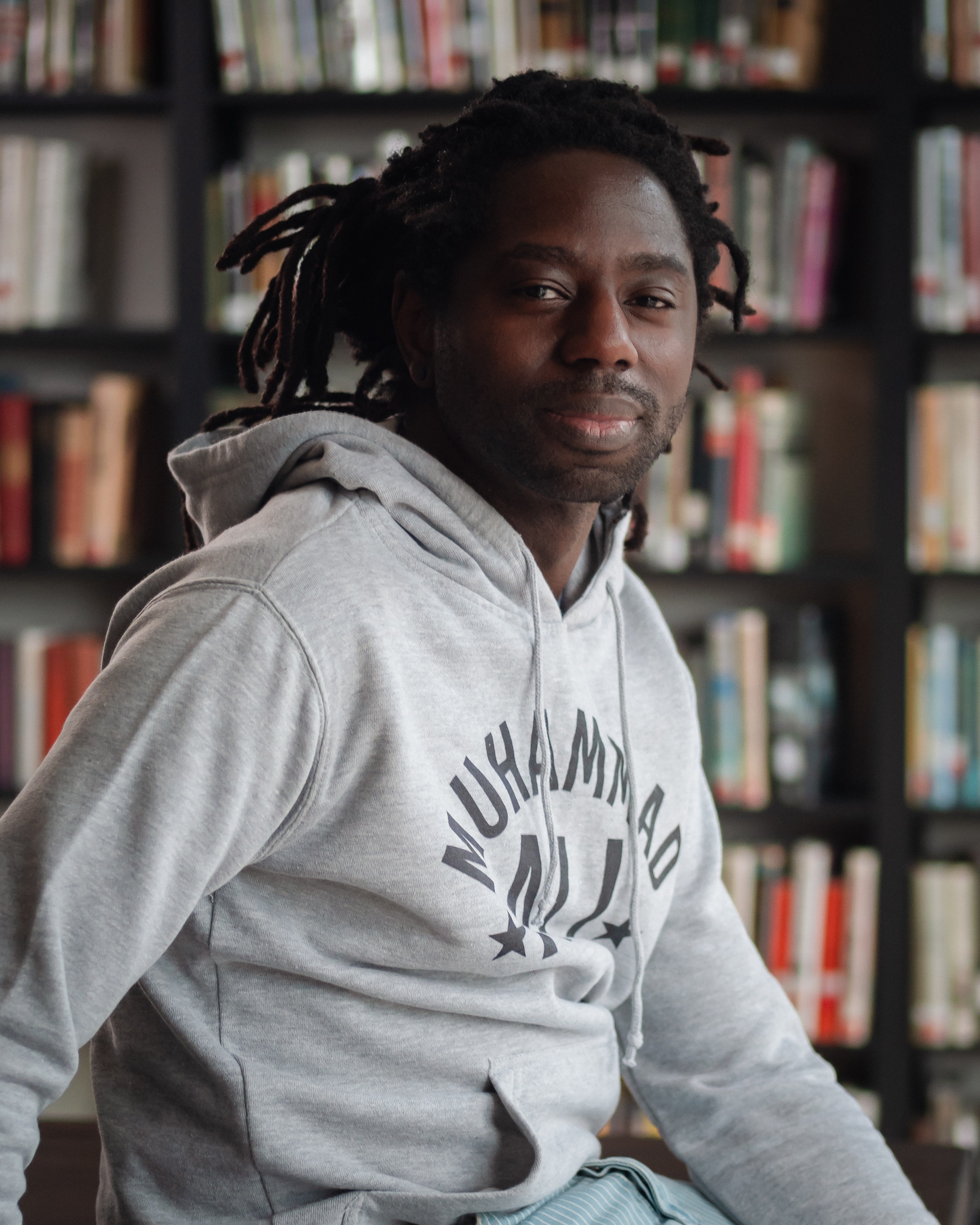 |
|
| photo: Roque Nonini | |
Sidik Fofana earned his MFA from New York University and is a public school teacher in Brooklyn. He was named a fellow at the Center for Fiction in 2018. His work has appeared in the Sewanee Review and Granta. His debut, Stories from the Tenants Downstairs (Scribner), offers eight narratives about residents of a fictional building in Harlem.
Handsell readers your book in 25 words or less:
Eight tenants from a Harlem high-rise tell you stories about their problems while the almighty landlord hovers over them.
On your nightstand now:
I sleep on a futon in the basement, or the couch in the living room, and only every now and then in an actual bed. But on the "nightstand" would be Wolf Hall by Hilary Mantel. I watch a little bit of the BBC series, then read some of the book. I don't know what it is, but I love reading about crazy white people.
Favorite book when you were a child:
Hands down Matilda by Roald Dahl. Although I did read Runaway Ralph by Beverly Cleary 100 times. Oh and can't forget Charlotte's Web. Shout out to E.B. White whose darkest joke was writing a book that made kids cry.
Your top five authors
Living: Edward P. Jones, Junot Díaz, Lorrie Moore, Chimamanda Ngozi Adichie, Jeffrey Eugenides. Bonus: Zadie Smith.
Dead: José Saramago, John Steinbeck, Frank McCourt, Langston Hughes and Toni Morrison.
Emcees: Tupac, Nas, Andre 3000, Lauryn Hill and Mos Def, Phonte or Kendrick depending on how I feel that day.
Book you've faked reading:
Don't get me in trouble! Infinite Jest by David Foster Wallace. I remember brilliant parts like the riff on that one man's obsession with episodes of M*A*S*H, but I'm just not that cerebral.
.jpg) Book you're an evangelist for:
Book you're an evangelist for:
Post-Traumatic by Chantal V. Johnson. My sister book, born the same year as my own. I've heard her read from it several times, and each time has been a transcendent experience.
Book that you bought for the cover:
Ladies and Gentlemen, the Bronx Is Burning by Jonathan Mahler. Didn't know at the time that it was the cover that reeled me in, but it is gray and frenetic just like New York is.
Book you hid from your parents:
I never hid a book from a parent, but my mom hid a book from me. Well, she didn't actually hide it since I found it in plain view on top of her dresser. She just never mentioned that she had bought it for herself. It was a biography of Nelson Mandela meant for young readers.
Book that changed your life:
Native Son by Richard Wright hit me like a ton of bricks. I was supposed to read it for a class and didn't get to it until two nights before it was due. It was one of the first times I remember reading something for school that didn't feel like homework.
Favorite line from a book:
"& the boys outside walgreens selling candy/ for a possibly fictional basketball team are my presidents," from the poem "my president," from the book Homie by Danez Smith. In that poem, they do this ode to friendship, shouting out memorable people in their life and electing them to high office. I tell you, these poets know what they're doing.
Five books that you'll never part with:
As I scan my golden shelf... A People's History of the United States by Howard Zinn, A Heartbreaking Work of Staggering Genius by Dave Eggers, The Complete Stories by Flannery O'Connor, Interpreter of Maladies by Jhumpa Lahiri, and Brown Girl, Brownstones by Paule Marshall, among others. Most of the books I own are in my classroom for all to browse, except those books. Those stay in my living room under heavy surveillance.
Book you most want to read again for the first time:
The Catcher in the Rye by J.D. Salinger. Or maybe there's a book out there that understands my middle age as much as that book understood my teendom.
Book you can't wait to come out:
Play World by Adam Ross. Always been a fan of his storytelling and dark humor.
Book Candy
Book Candy
Headline of the day (via the Onion): "Bored woman to give book few more chapters just in case author gets better at writing."
Open Culture explored the "improbable invention of Chinese typewriters & computer keyboards: three videos tell the techno-cultural story."
Merriam-Webster has added 370 new words to the dictionary for September 2022, including dumbphone and laggy.
The New York Public Library recommended some books on "safety & digital citizenship for kids & teens."
Rediscover
Rediscover: Peter Straub
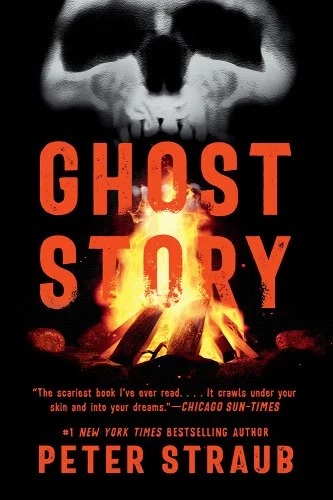 Peter Straub, "whose literary novels of terror, mystery and the supernatural placed him in the top ranks of the horror-fiction boom of the 1970s and '80s, alongside writers like Ira Levin, Anne Rice and his close friend and collaborator Stephen King," died September 4 at age 79, the New York Times reported. A fan of Henry James and John Ashbery, Straub published several poetry chapbooks before turning to novels, and began writing about the supernatural after two conventional novels were unsuccessful. Julia (1975) "was a novel that involved what turned out to be a ghost, so it was a horror novel," he told the Milwaukee Journal-Sentinel in 1996. "I didn't know much about the field at that time. I just wanted very much to write a novel that would make money so I wouldn't have to get a job. With the first sentence, I felt this enormous relief. I felt at home right away."
Peter Straub, "whose literary novels of terror, mystery and the supernatural placed him in the top ranks of the horror-fiction boom of the 1970s and '80s, alongside writers like Ira Levin, Anne Rice and his close friend and collaborator Stephen King," died September 4 at age 79, the New York Times reported. A fan of Henry James and John Ashbery, Straub published several poetry chapbooks before turning to novels, and began writing about the supernatural after two conventional novels were unsuccessful. Julia (1975) "was a novel that involved what turned out to be a ghost, so it was a horror novel," he told the Milwaukee Journal-Sentinel in 1996. "I didn't know much about the field at that time. I just wanted very much to write a novel that would make money so I wouldn't have to get a job. With the first sentence, I felt this enormous relief. I felt at home right away."
His next two novels, If You Could See Me Now (1977) and Ghost Story (1979), were also bestsellers. Both books were adapted into films, the former as Full Circle in 1977 and the latter in 1981. Julia was also filmed, as The Haunting of Julia. King, who wrote a blurb for Ghost Story, recalled: "We got it at the post office. It was all kind of split open. And so I was driving and my wife opened it and she started to read it to me. And by the time we got back to our house, we were both really excited, because we knew that this was really sort of a masterwork."
King and Straub teamed up in the early 1980s to write The Talisman. They reunited in 2001 to write a sequel, Black House, and were discussing a third book, but it was still in its earliest stages at Straub's death. "He was a unique writer in a lot of ways," said King. "He was not only a literary writer with a poetic sensibility, but he was readable. And that was a fantastic thing. He was a modern writer, who was the equal of say, Philip Roth, though he wrote about fantastic things."
Straub continued to write bestselling books, including the Blue Rose trilogy (Koko, Mystery, The Throat), which revolves around the hunt for a serial killer. Though there is nothing supernatural about them, each of the three books won a Bram Stoker Award from the Horror Writers Association. Overall, Straub's books and stories were nominated for a dozen World Fantasy Awards, winning four, and 14 Bram Stoker Awards, with 10 wins, among many other award nominations. He was named a World Horror Grandmaster in 1997, won a Stoker award for life achievement in 2006, was named an International Horror Guild living legend in 2008, and received a life achievement World Fantasy Award in 2010. His daughter, Emma Straub, author and co-owner of Brooklyn's Books Are Magic, wrote a tribute to her father on Twitter.
| Advertisement The Primal of Death Must Be Defeated |


